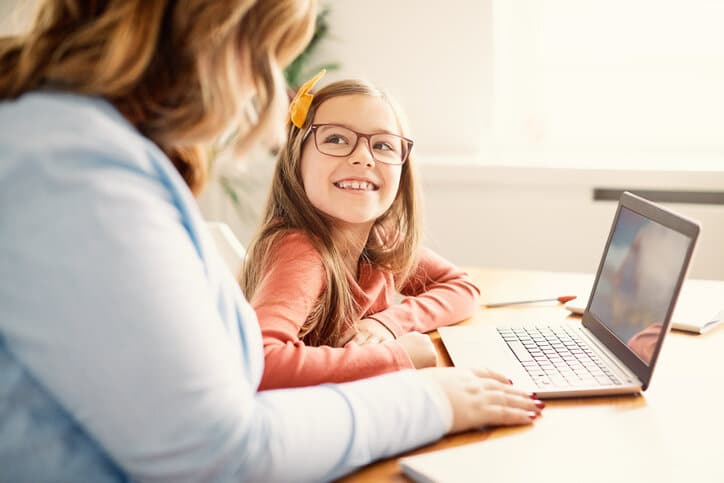If you’ve chosen Spanish as the second language for your child to study, you’ve made a good choice! Spanish is a common second language choice. As a matter of fact, 75 million people speak Spanish as a second language. That makes Spanish the third most studied language. Childhood is a great time for your kid to learn a language and become fluent. Before your child can get fluent in any language, they will have to learn basics. There are plenty of easy Spanish phrases for kids to learn.
The kids can learn these phrases from you including it in normal conversation, watching shows or playing games. The important thing is that they hear the phrases and the meanings frequently enough and then they’ll learn them quite easily.
Easiest Spanish Phrases for Kids to Learn
The Spanish phrases we picked are phrases that are important to know and are used very often in Spanish speaking countries. These phrases are very basic but are so essential in becoming a native speaker.
-
Hola/Adiós- These are probably the first words that we learnt in Spanish class ourselves. Hola is a popular way of saying “Hello” and adiós means “good-bye”. Just remember the H is silent when you’re pronouncing it. These phrases go great with smiles.
-
Buenos Dias/Buenas Tardes/Buenas Noches- These phrases mean “good morning” “good afternoon” and “good night” respectively. These phrases can be used both as a greeting or a farewell.
Teaching Kids Polite Phrases in Spanish
-
Por Favor/Gracias- Being polite is so important, these phrases mean “please” and “thank you” respectively. You can practice these easily at home in normal conversation.
-
De Nada– This means “You’re welcome”. It’s the perfect response to “Gracias”. This used in both informal and formal setting. It’s not the only way to respond to gracias, you can also say “está bien” which means it’s all good.
Teaching Kids How to Introduce Themselves in Spanish
-
Me llamo/Mi nombre es/Soy….- All of these phrases followed by your name means “My name is…..”. It’s always important to know how to introduce ourselves to others and these phrases are easy to remember and will be understood by Spanish speakers.
-
¿Cómo estás?/¿Cómo te va?/¿Qué tal? – All of these phrases are used to ask someone how they are doing. ¿Cómo estás? and ¿Cómo te va? are acceptable in formal settings. ¿Qué tal? is more of an informal response and is used when speaking to friends in a casual setting. It is similar to “What’s up?” in English.
-
Bien, gracias- This is a standard way of responding to ¿Cómo estás?. Bien, gracias directly translates to “good, thanks” or “good, thank you”. Other words you can use instead of “bien” are: regular (regular/normal) and mal (bad).
-
Ayúdame, por favor- This directly translates to “help me, please”. It’s important for children to know how to ask for help if the need arises. Ayúdame can be used in an emergency or non-emergency situation. On the other hand, ¡Auxilio! Is more often used for an emergency situation.
-
Mucho gusto/Encantado/Un placer- All of these phrases is equivalent to saying “It was nice to meet you”. They are commonly used after an introduction. “Encantada” is used if the speaker is a girl and “Encantado” is used if the speaker is a boy.
Teach Your Kids How To Say I Love You in Spanish
-
Te amo/ Te adoro/ Te quiero- All of these phrases mean “I love you”. We know you tell your child you love them all the time, you can substitute the English phrase for the Spanish phrase and simply just explain what it means. They’ll learn it and use it in no time.
Short Spanish Phrases are EASY to Learn!
Learning little phrases here and there can give your child the confidence they need to become fluent. When they realize how easily they catch on they’ll be excited to learn more phrases and words and before you know it, they can do conjugations in different tenses. These phrases are very short and simple to learn. We made sure to include some of the informal phrases too because no one talks like a Spanish textbook in real life. Informal phrases also help to make your child sound more like a native speaker because it’s a more natural way of speaking.
Of course, phrases alone won’t make your kid fluent. If you’re serious about teaching your child a second language, consider TruFluency Kids – you can join a group class for as little as $12, drop in to a class just 1 time to try it out, or ask us for private lessons.
We know exactly how kids want to learn Spanish and that’s why we deliver our lessons in kid-friendly ways. Our methods are tried and proven so you can be confident in your child learning effectively learning Spanish. If you have any questions, please don’t hesitate to contact us.


